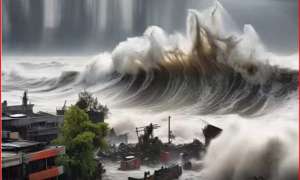After the successful landing of Chandrayaan-3 on the moon, India became the first country in the world to discover many elements including rover’s oxygen.
New Delhi. After the successful landing of Chandrayaan-3 on the Moon, the Rover continues to make significant progress in its exploration of the Moon. In this episode, the vehicle has discovered many such elements including oxygen on the moon, which no country has been able to do till now.
Lander ‘Vikram’ and rover ‘Pragyan’ have sent many images since Chandrayaan 3’s landing at the South Pole. The vehicle is now exploring the possibility of human settlement on the moon. ISRO chief S Somnath has said many times even before the landing that the South Pole is a very special area for exploration on the moon, where the possibility of living of people can be found.
what elements were found on the moon
Pragyan Rover found Oxygen (O), Sulfur (S), Aluminum (Al), Calcium (Ca), Iron (Fe), Chromium (Cr), Titanium (Ti), Silicon (Si), Manganese (Mn) on Moon Are. All these have been found with the help of the rover’s payload Laser Induced Breakdown Spectroscope (LIBS).
After getting all this, now if the rover discovers the most important hydrogen on the moon, then it can be a big step in the search for water on the moon.
The disclosure of the temperature on the moon is also surprising
Recently, Chandrayaan 3 had revealed a surprising fact about the temperature on the moon. When the lander measured the temperature of the lunar soil, it was found that the temperature here ranges from zero to 70 degrees. ISRO was also surprised by this information. This is because, scientists believed that the maximum temperature on the moon could be up to 30 degrees.











